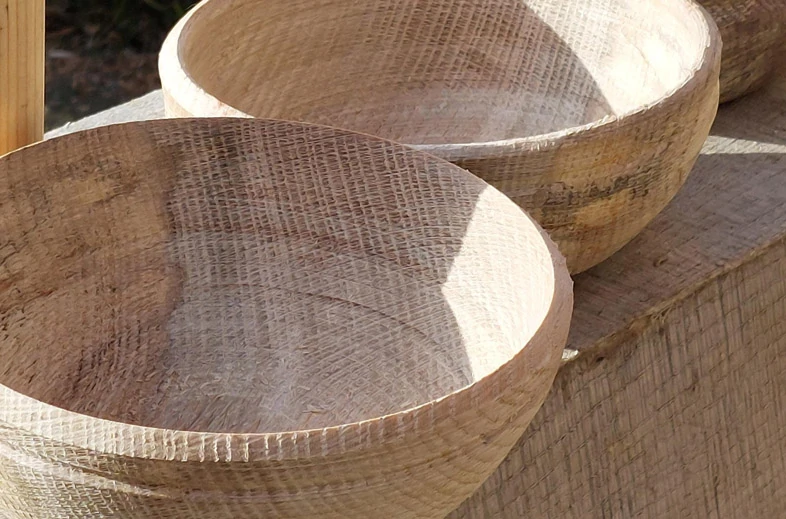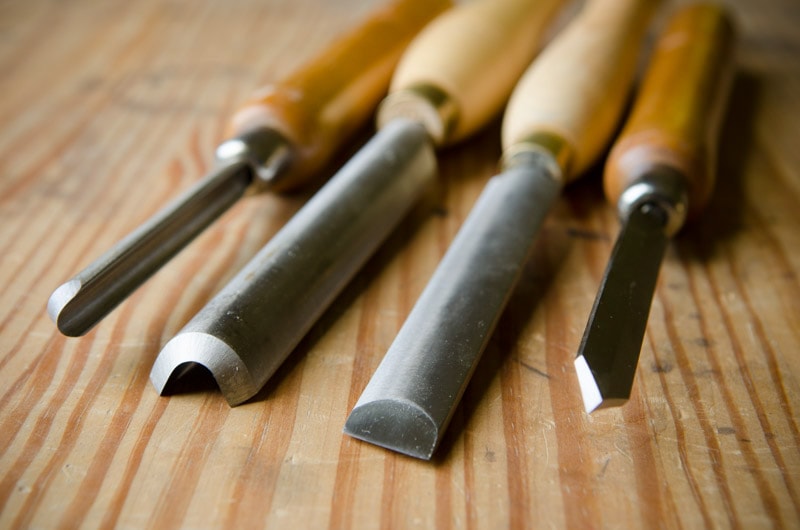Table of Contents
The best wood for turning is typically hard maple, cherry, or walnut. These woods offer durability and a smooth finish.
Woodturning is a popular craft that transforms raw wood into beautiful, functional objects. Choosing the right wood is crucial for achieving the best results. Hard maple is favored for its density and fine grain, making it ideal for detailed work.
Cherry wood, known for its rich color and smooth texture, is also a top choice for turners. Walnut, with its dark, elegant appearance, provides a stunning finish. Each of these woods offers unique characteristics, making them highly sought-after in the woodturning community. Selecting the right wood enhances your project’s quality and visual appeal, ensuring a satisfying and successful turning experience.
Introduction To Wood Turning
Wood turning is a beautiful art. It involves shaping wood on a lathe. Many people find it relaxing and fun. The wood spins, and the tool shapes it. This craft requires skill and patience. Different woods offer different results. Some woods are easy to turn, while others are hard. Choosing the right wood is very important.
Certain tools are needed for wood turning. Lathes hold and spin the wood. Gouges and chisels shape the spinning wood. Sandpaper smooths the finished piece. Safety gear is also important. Goggles protect your eyes. Dust masks keep your lungs safe. Gloves protect your hands. Having the right tools makes the job easier.
Characteristics Of Ideal Turning Wood
Dense grain and uniform texture make wood ideal for turning. Opt for species like maple, cherry, and walnut. These woods provide smooth finishes and rich colors, enhancing your projects’ aesthetic appeal.
Grain Structure And Hardness
Good turning wood has a fine and even grain. This makes it easier to work with. Hardness is also important. Softwoods can tear out. Hardwoods offer a smoother finish. Maple and cherry are good choices. Oak and walnut are also popular. Avoid wood with knots and cracks. This can make turning difficult.
Moisture Content And Stability
Wood should be properly dried before turning. High moisture can cause cracks. Low moisture makes wood stable. Kiln-dried wood is a good option. Air-dried wood can also work. Check the moisture content with a meter. Ideal moisture is around 6-8%. This ensures the wood is stable. Stability helps in achieving a smooth finish.
Top Hardwoods For Turning
Maple is a favorite for woodturners. It is hard and durable. Its fine grain makes it easy to work with. Maple can take a high polish. It is versatile for many projects. Bowls, spindles, and furniture all look great in maple. Its color ranges from creamy white to light brown. This wood often has unique patterns. These patterns add beauty to any piece.
Walnut is known for its rich, dark color. It has a beautiful grain. Walnut is strong and stable. This makes it perfect for turning projects. The wood is easy to carve and shape. Many turners love walnut for its natural look. It finishes well, often without stains. This wood is excellent for decorative pieces. Bowls, pens, and other items shine in walnut.

Credit: jbwoodcrafts.co.uk
Favorite Softwoods Among Craftsmen
Pine is popular for wood turning. It is very soft and easy to shape. This wood is often used by beginners. Pine has a smooth texture. It takes paint and stain well. Pine is also very affordable.
Cedar is known for its aromatic smell. This wood is very lightweight. Cedar is also resistant to rot. Many craftsmen love cedar for its beautiful color. Cedar is easy to work with and does not warp.
Exotic Woods That Make A Statement
Cocobolo wood is known for its rich colors. It has deep reds, oranges, and browns. The patterns are unique and varied. Each piece of Cocobolo is different. It is a hard wood. This makes it great for turning projects. The wood has a natural oil. This makes it easy to polish. A finished Cocobolo piece looks stunning.
Zebrawood has a distinctive look. It has bold, dark stripes. The background is light brown or cream. This contrast makes it stand out. Zebrawood is not just pretty. It is also strong and durable. This wood is perfect for turning. The finished products have a smooth, glossy finish. People often use Zebrawood for decorative items. It makes a statement in any project.

Credit: woodandshop.com
Considerations For Sustainable Wood Turning
Responsible sourcing means choosing wood that is sustainably harvested. This helps protect our forests. Always check for certifications like FSC or PEFC. These labels ensure the wood is from a well-managed forest.
Using reclaimed wood is a great way to be eco-friendly. This wood comes from old buildings and furniture. It has a unique look and history. Recycled wood is another good choice. It is made from wood scraps and leftovers. Both options reduce waste and save trees.
Preparation And Care Of Turning Woods
Wood must be seasoned well. This process helps to remove moisture. Dry wood is easier to turn. It also reduces the risk of cracking. Always store your wood in a dry place. Keep it away from direct sunlight. Sunlight can cause the wood to warp.
Sharp tools are essential for precision. Dull tools can ruin your project. Regularly check your tools for sharpness. Use a sharpening stone if needed. Properly maintained tools last longer. Clean your tools after each use. This prevents rust and damage. Store tools in a dry place.
Inspiring Projects For Beginners To Advanced
Beginners love to start with simple bowls and plates. These projects help in learning the basics of wood turning. Using soft woods like pine or poplar makes the process easier. Creating bowls and plates can be very satisfying. These items are also very useful in everyday life. Different designs and sizes can be experimented with. Each piece will be unique and special.
Advanced wood turners often try complex sculptural pieces. These projects require more skill and patience. Hardwoods like oak or maple are ideal for such pieces. Sculptural pieces can include figurines, abstract art, and even intricate designs. Each creation showcases the artist’s talent. Such projects can be very rewarding. They can also become beautiful decorative items for the home.
:max_bytes(150000):strip_icc()/baseball-bats-leaning-on-wall-WA5065-001-584f0ed63df78c491e315cba.jpg)
Credit: www.thesprucecrafts.com
Frequently Asked Questions
Is Pine A Good Wood For Turning?
Yes, pine is good for woodturning. It’s soft, easy to shape, and affordable. However, it can be prone to splintering.
What Is The Best Type Of Wood To Use On A Lathe?
Hardwoods like maple, cherry, and walnut are best for lathes. They turn smoothly and finish well.
Is Oak Good For Woodturning?
Yes, oak is great for woodturning. It’s durable, hard, and offers a beautiful grain pattern. Oak can be challenging to work with but produces stunning results.
What Wood Is Used For Turning Projects?
Common woods for turning projects include cherry, walnut, maple, and oak. These woods are durable and easy to work with. Exotic options like ebony and cocobolo can add unique touches. Always choose wood based on your project’s needs and desired finish.
Conclusion
Choosing the right wood for turning can elevate your projects. Different woods offer unique characteristics and beauty. Consider your project’s needs and personal preferences. Experiment with various types to find your favorite. With the right wood, your creations will stand out, ensuring both quality and satisfaction in every piece you craft.
